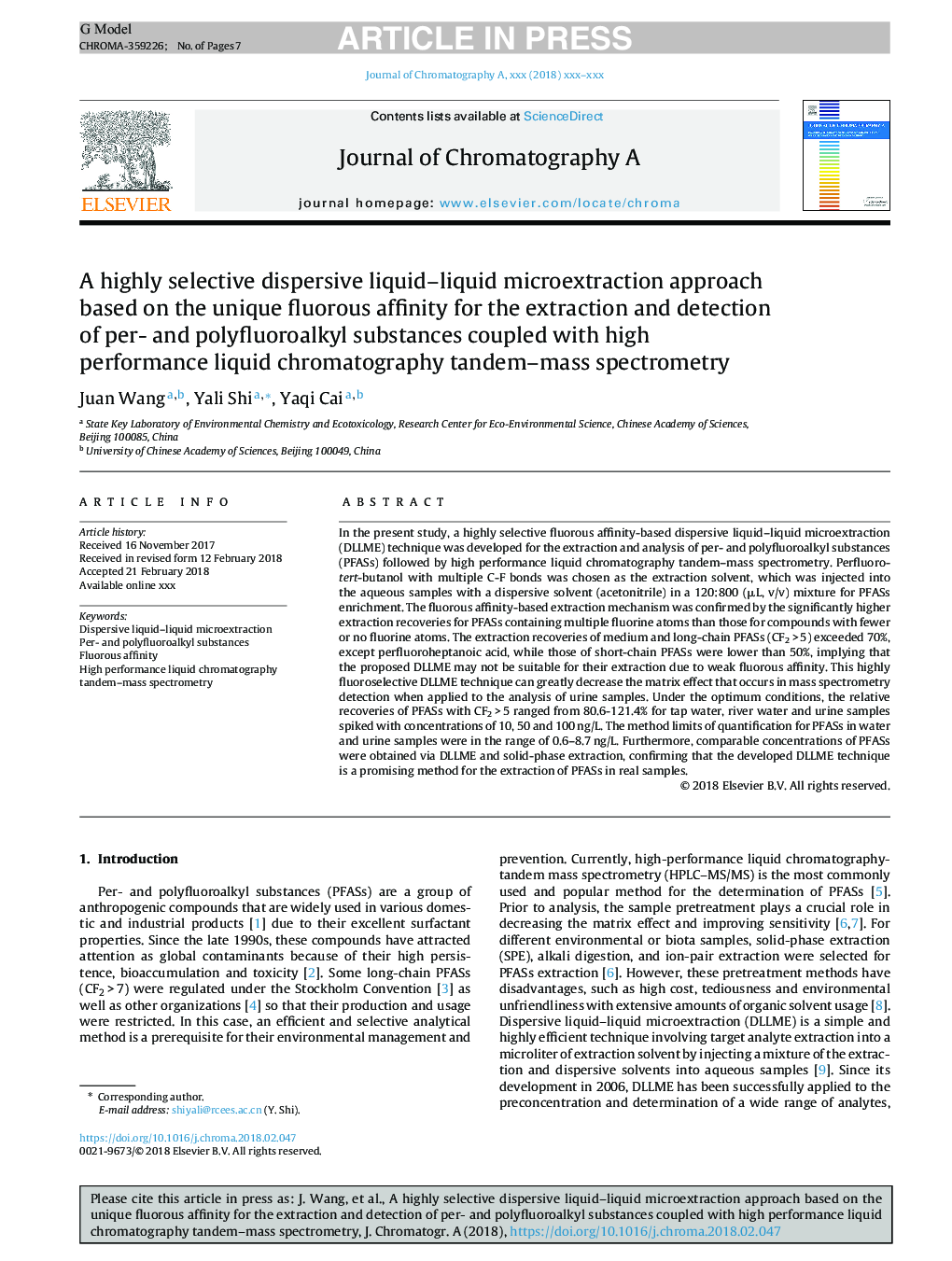| کد مقاله | کد نشریه | سال انتشار | مقاله انگلیسی | نسخه تمام متن |
|---|---|---|---|---|
| 7608488 | 1493382 | 2018 | 7 صفحه PDF | دانلود رایگان |
عنوان انگلیسی مقاله ISI
A highly selective dispersive liquid-liquid microextraction approach based on the unique fluorous affinity for the extraction and detection of per- and polyfluoroalkyl substances coupled with high performance liquid chromatography tandem-mass spectrometry
ترجمه فارسی عنوان
یک روش میکرو اکستراسیک مایع بسیار انتخابی براساس منحصر به فرد فلوراسیون منحصر به فرد برای استخراج و شناسایی مواد پروتئین و پلی فلوئوروآلکلی همراه با طیف سنجی جرم کروماتوگرافی مایع با کارایی بالا
دانلود مقاله + سفارش ترجمه
دانلود مقاله ISI انگلیسی
رایگان برای ایرانیان
کلمات کلیدی
موضوعات مرتبط
مهندسی و علوم پایه
شیمی
شیمی آنالیزی یا شیمی تجزیه
چکیده انگلیسی
In the present study, a highly selective fluorous affinity-based dispersive liquid-liquid microextraction (DLLME) technique was developed for the extraction and analysis of per- and polyfluoroalkyl substances (PFASs) followed by high performance liquid chromatography tandem-mass spectrometry. Perfluoro-tert-butanol with multiple C-F bonds was chosen as the extraction solvent, which was injected into the aqueous samples with a dispersive solvent (acetonitrile) in a 120:800 (μL, v/v) mixture for PFASs enrichment. The fluorous affinity-based extraction mechanism was confirmed by the significantly higher extraction recoveries for PFASs containing multiple fluorine atoms than those for compounds with fewer or no fluorine atoms. The extraction recoveries of medium and long-chain PFASs (CF2â¯>â¯5) exceeded 70%, except perfluoroheptanoic acid, while those of short-chain PFASs were lower than 50%, implying that the proposed DLLME may not be suitable for their extraction due to weak fluorous affinity. This highly fluoroselective DLLME technique can greatly decrease the matrix effect that occurs in mass spectrometry detection when applied to the analysis of urine samples. Under the optimum conditions, the relative recoveries of PFASs with CF2â¯>â¯5 ranged from 80.6-121.4% for tap water, river water and urine samples spiked with concentrations of 10, 50 and 100â¯ng/L. The method limits of quantification for PFASs in water and urine samples were in the range of 0.6-8.7â¯ng/L. Furthermore, comparable concentrations of PFASs were obtained via DLLME and solid-phase extraction, confirming that the developed DLLME technique is a promising method for the extraction of PFASs in real samples.
ناشر
Database: Elsevier - ScienceDirect (ساینس دایرکت)
Journal: Journal of Chromatography A - Volume 1544, 6 April 2018, Pages 1-7
Journal: Journal of Chromatography A - Volume 1544, 6 April 2018, Pages 1-7
نویسندگان
Juan Wang, Yali Shi, Yaqi Cai,
